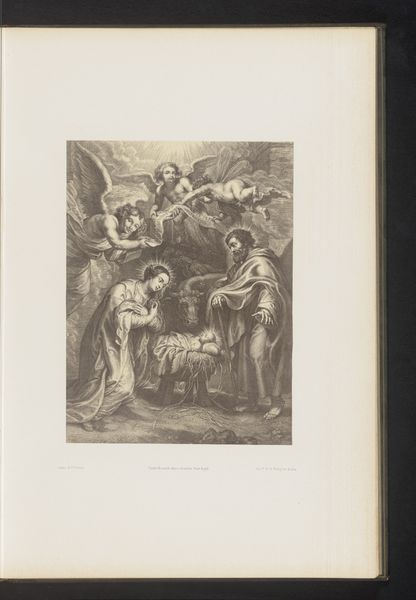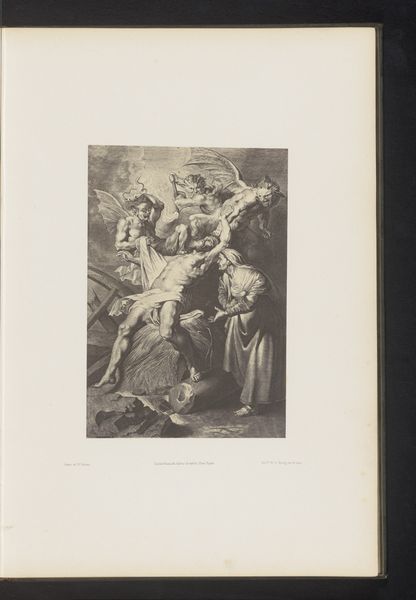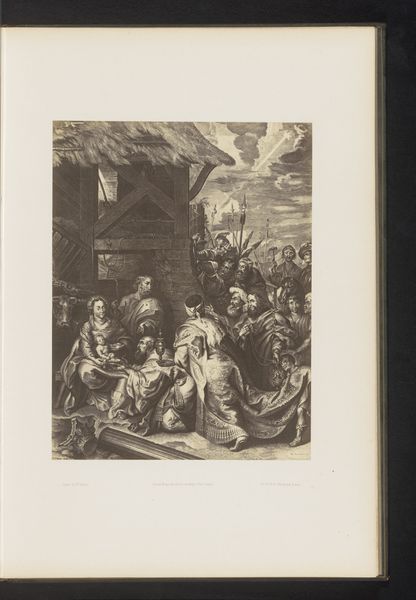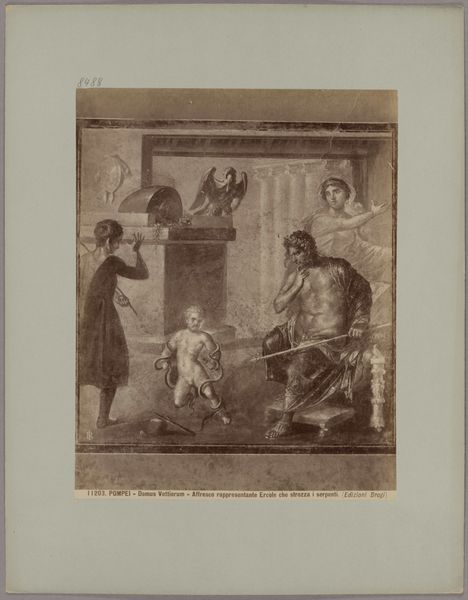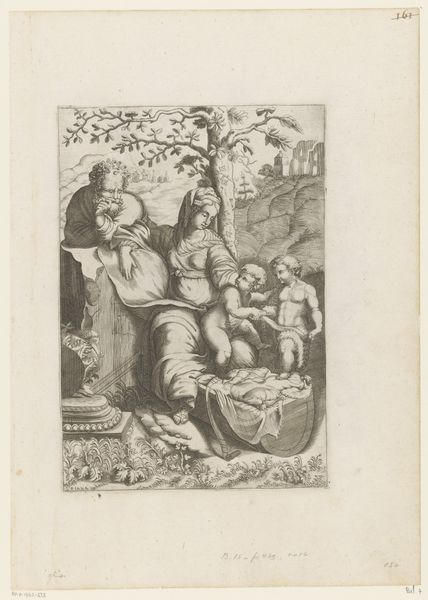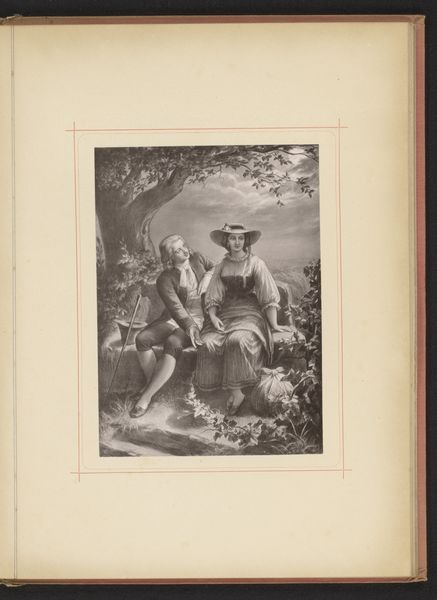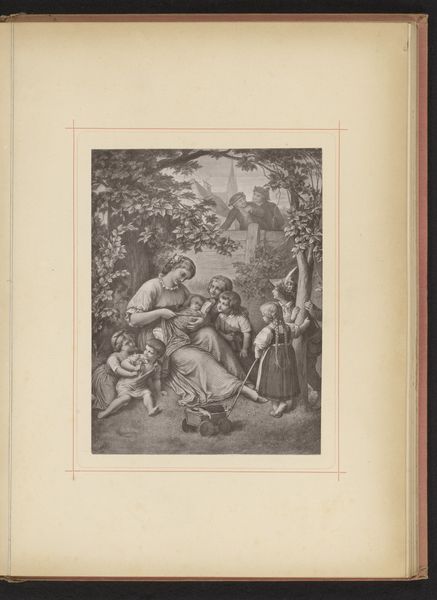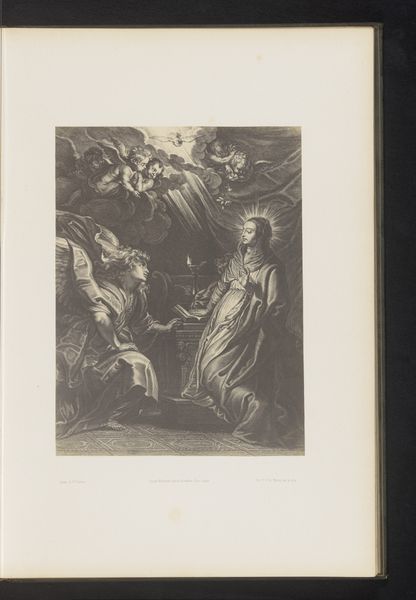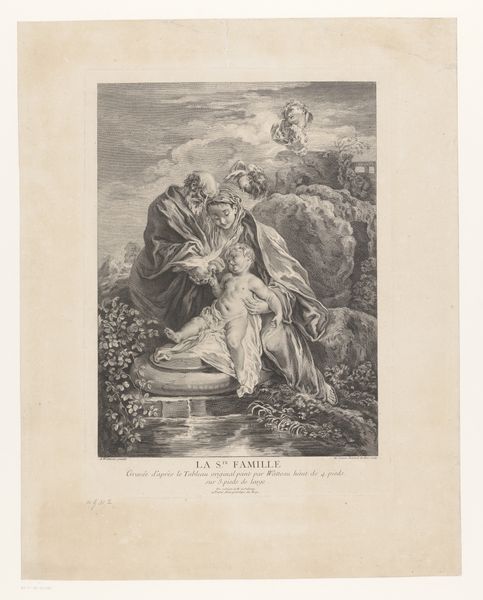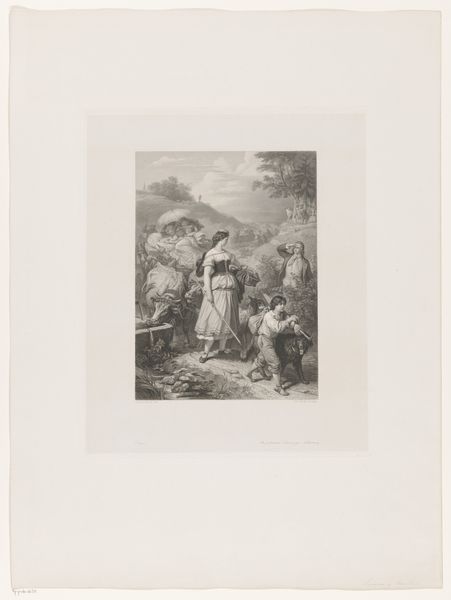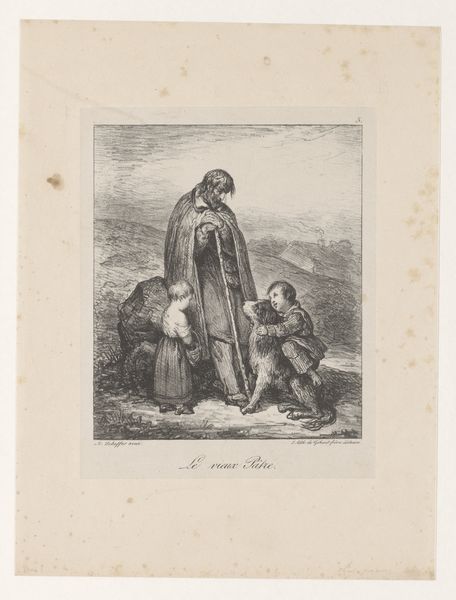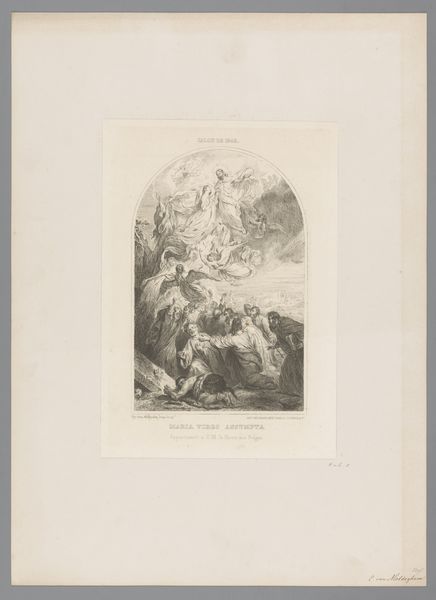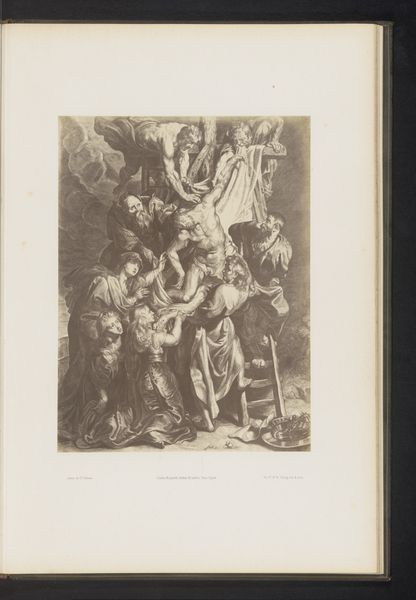
Fotoreproductie van een gravure van De terugkeer van de heilige familie uit Egypte door Schelte Adamsz. Bolswert, naar het schilderij door Peter Paul Rubens before 1858
0:00
0:00
Dimensions: height 271 mm, width 205 mm
Copyright: Rijks Museum: Open Domain
Editor: Here we have "Fotoreproductie van een gravure van De terugkeer van de heilige familie uit Egypte door Schelte Adamsz. Bolswert, naar het schilderij door Peter Paul Rubens," made before 1858. It’s an engraving, a print, of the Holy Family’s return. I'm struck by the use of line to create such depth. What can you tell me about it? Curator: Well, consider the means of production here. This isn't just about religious iconography, it's about the system that allowed this image to circulate. Engravings like these democratized access to Rubens' paintings. Who owned the plates? Who printed them? And who ultimately purchased them? These questions point to a complex web of economic and social relations. Editor: So, it's less about the subject matter and more about how it became accessible? Curator: Precisely. The material form of the engraving – the copper plate, the ink, the paper – determined its reach. Look at the detail achieved through the engraving process. Each line is a trace of labor, a testament to the skill and effort required to reproduce Rubens’ original composition. Were there workshops churning these out, and under what conditions? How did this impact ideas around authorship and value? Editor: That’s a perspective I hadn’t considered. It reframes the image in terms of its creation and dissemination, beyond just its religious theme. Were these mass produced? Curator: Relative to unique paintings, yes, but still requiring significant skill and resources. Think of it as an early form of media, influencing perceptions of religious narratives through mass consumption. The wear and tear on the plate itself, how many impressions could it realistically make before degrading the image and how might this speak of its economic usefulness? Editor: I’m starting to see how this changes my understanding of the artwork; the medium *is* the message. It’s a lesson in the history of printmaking and its cultural impact. Curator: Exactly. It prompts us to investigate the forces that shaped its production, distribution, and consumption – the materiality underpinning artistic exchange.
Comments
No comments
Be the first to comment and join the conversation on the ultimate creative platform.
